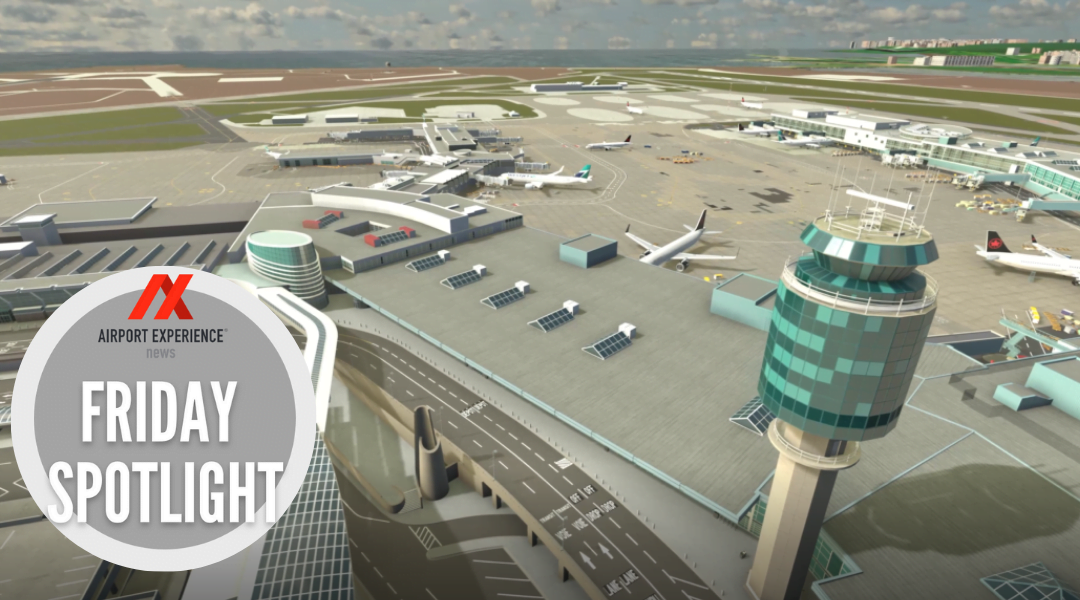In March, the Vancouver Airport Authority launched a new data-driven platform that officials believe will present the airport with enhanced opportunities for crowd management, passenger tracking and consumer influence.
This platform is called a Digital Twin, and it was designed by Unity, a videogame software developer. Unity describes the concept on its website as “a virtual representation of a physical site… capable of mimicking its real-world counterpart’s condition and behavior. Enriched with data, it informs decision-making by helping understand the past, observe the present, and predict the future.”
Lynette DuJohn, vice president of innovation at Vancouver International Airport (YVR), says the technology used to create the digital twin mimics the virtual worlds created for players of video games.
“Digital twin technology kind of came out of the gaming industry,” she says. “If you think about games that you play, they create virtual worlds and you go in and play your game in a virtual world, and those exact same platforms can be now used to replicate the real world.”
It’s certainly an outside the box idea, to bring in a company known for building video games to design your real-world business data platform, but as DuJohn said, “We can learn a lot from other industries, so we really wanted to make that move, we wanted to look external to the industry and figure what’s out there and bring it in and see how that applies to the airport.
“The other thing that was really important for us is that we’re here to support our community and ensure that local companies that work with us have an opportunity to grow and scale and be more economically viable in and of themselves,” she added. “We see that we play a significant role in that.”
DuJohn says many other high-volume industries have also begun embracing the idea of a digital platform for visualizing the vast amounts of data they collect and sort every day: manufacturing, shipping, engineering and architecture, “So many use cases that reflect all the things you can do with the real world [in this virtual platform],” she added.

As with many innovations these days, the idea was borne of the pandemic.
“With Covid, we knew we had to come out of it as a different airport,” she said. “With paying so much more attention to costs and being more effective and more efficient,” DuJohn said the new technology can help streamline new processes without shopping and paying for new solutions at every turn.
“Our first concept was directed to directional awareness,” she said. “So, we now have a tool to understand how passengers are using the terminals.” This doesn’t identify specific passengers, she explained, but allows the airport to observe trends in the ways people move through the airport. They use data that currently only exists as numbers and turn it into a visual representation of the information that is easy to understand.
“We have quite a mature business intelligence program that pulls data from our airlines,” said DuJohn. “So, we basically know how many passengers are moving through the terminal…” They’re then able to use those numbers and others collected from within the facility to plot the movement of crowds.
In fact, at some point in the future, the entire island housing the airport will also be part of the platform. The Musqueam First Nations band government, which owns Sea Island, the land on which YVR sits, also worked closely with YVR officials to help create the technology. DuJohn said YVR is seeking continued collaboration with the Musqueam people as the technology continues to develop. In addition to the airport campus, Musqueam historical art and traditional pathways around the island have also begun the digitization process.
“We captured the entire island,” she said. The process of digitizing Sea Island involved a flyover with a helicopter and lidar technology that captured the island, the water and the surrounding shores.

Inside the terminal, the platform is still in its infancy and officials continue to explore the ways it can be used. The maintenance team, for example, has been able to streamline their operations and tackle issues more effectively. Revenue generating applications are still being considered, but DuJohn thinks the technology will help sales passively, as well.
“Certainly, there are opportunities to make people move through the facility more effectively and if they move through with less stress they’re more apt to stop and have a meal or go in and do more shopping,” she said. “The effectiveness ties to revenue.”
Indeed, there are so many opportunities to use this digital twin technology to enhance and grow airport revenue, and the project isn’t even done yet, nor will it ever be, says DuJohn.
“The digital twin will never be complete,” she said. “It just continues to build on our existing use cases.”






